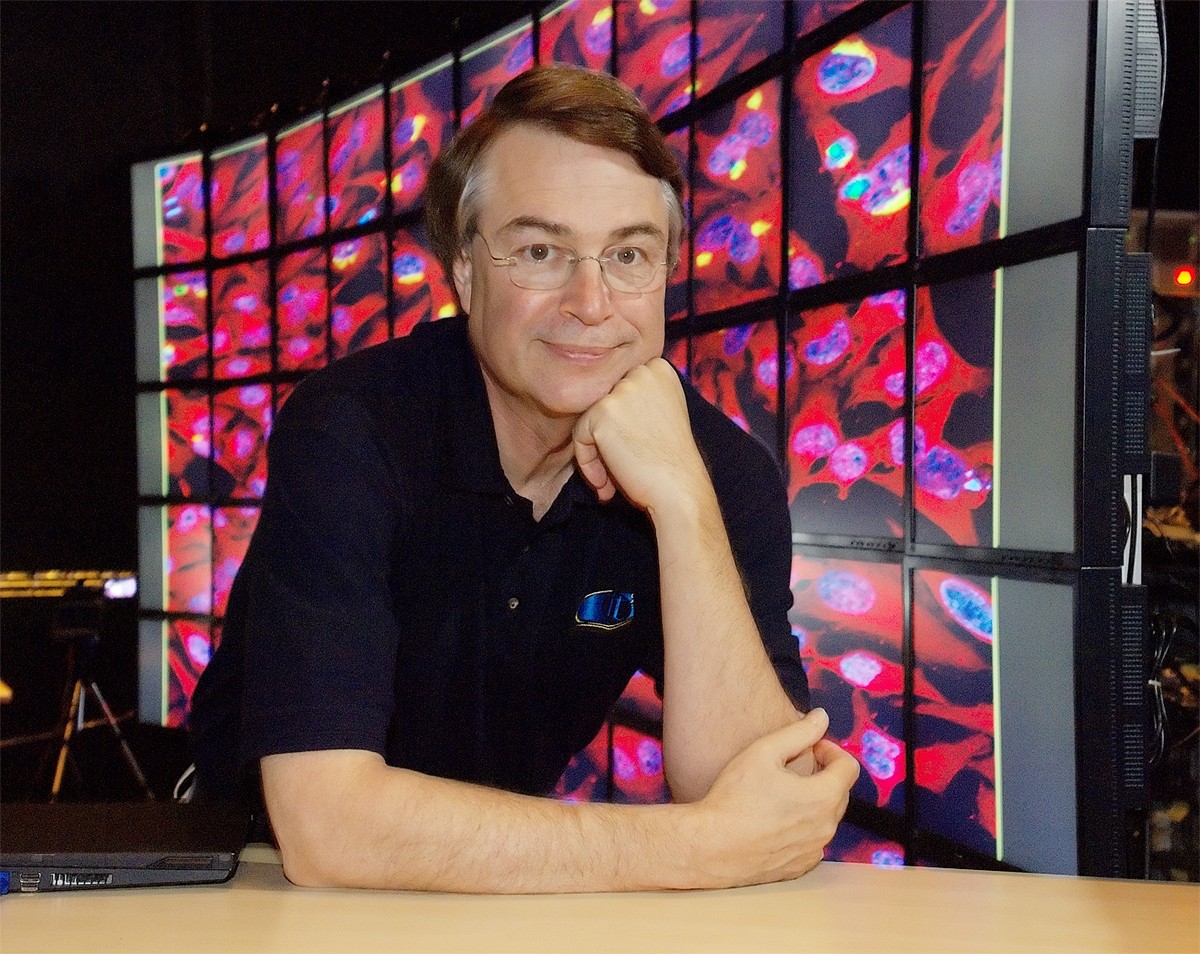- unknown (b.)
Bio/Description
A physicist and leader in scientific computing, supercomputer applications, and Internet infrastructure, he received both his BA and MS at the University of Missouri in Columbia, Missouri and received a Ph.D. in physics from the University of Texas at Austin in 1975, did research at Princeton University, Yale, and Harvard, and then joined the faculty of the University of Illinois at Urbana-Champaign in 1979. He is presently a Professor of Computer Science and Information Technologies at the University of California, San Diego. While at Illinois he wrote an ambitious proposal to address the future needs of scientific research. Seven other University of Illinois professors joined as co-Principal Investigators, and many others provided descriptions of what could be accomplished if the proposal were accepted. Formally titled "A Center for Scientific and Engineering Supercomputing" but known as the Black Proposal (after the color of its cover), it was submitted to the National Science Foundation in 1983. A scant 10 pages long, it was the first unsolicited proposal accepted and approved by the NSF, and resulted in the charter of four supercomputer centers (Cornell, Illinois, Princeton, and San Diego), with a fifth (Pittsburgh) added later. In 1985 he became the first Director of the Illinois center, the National Center for Supercomputing Applications. He continued to promote the benefits of technological innovation to scientific research, such as his advocacy of a high-speed network linking the national centers, which became the NSFnet, one of the significant predecessors of today's Internet. When the NSF revised its funding of supercomputer centers in 1997, He became Director of the National Computational Science Alliance, linking dozens of universities and research labs with NCSA to prototype the concept of grid computing. In 2000, he moved to California and proposed the creation of the California Institute for Telecommunications and Information Technology (Calit2), linking departments and researchers at UCSD and UC Irvine. He currently serves as Institute Director of Calit2. As part of the work of Calit2, he is Principal Investigator on the NSF OptIPuter LambdaGrid project, an "optical backplane for planetary scale distributed computing". He attended the Beyond Belief symposium on November 2006 and presented at the 2010 Life Extension Conference. He has received numerous honors and awards, including: Member of the National Academy of Engineering; Fellow of the American Physical Society; Fellow of the American Academy of Arts and Sciences; and Franklin Institute's Delmer S. Fahrney Medal for Leadership in Science or Technology (1990). Also, In 2005, he was awarded the Telluride Tech Festival Award of Technology in Telluride, Colorado and is recognized as a member of the San Diego Science Festival's Nifty Fifty, a collection of the most influential scientists in the San Diego area. He has authored or co-authored several publications, a few of which are: "Supercomputing and the Transformation of Science", Scientific American Library, W. H. Freeman and Company, 1993. ISBN 0-7167-5038-4 with William J. Kaufmann III; "Grids in Context" in "The Grid: A Blueprint for the New Computing Infrastructure, 2nd Edition", Ian Foster and Carl Kesselman, eds., Morgan Kaufmann, 2003 - Members of the President's Information Technology Advisory Committee. "Information Technology Research: Investing in Our Future", a Report to the President of the United States, 1999; "Extraterrestrial Computing: Exploring the Universe with a Supercomputer". Chapter 8 of "Very large Scale Computation in the 21st Century", Jill P. Mesirov, ed., Society for Industrial and Applied Mathematics (SIAM), 1991; with Charlie Catlett, "Metacomputing, Communications of the ACM", vol. 35, no. 6, June 1992; and "How Supercomputers are Transforming Science," Encyclopædia Britannica Yearbook, 1991.
-
Gender:
Male -
Noted For:
Advocate of a high-speed network linking the National Science Foundation and the National Center for Supercomputing Applications which became the NSFnet, one of the significant predecessors of today's Internet -
Category of Achievement:
-
More Info:


